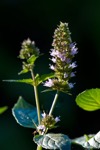Notice (8): Undefined index: geoplugin_countryCode [APP/Controller/AppController.php, line 94]Code Context$Country_code = '';if($ip_data && $ip_data['geoplugin_countryCode'] != null) {$Country_code = $ip_data['geoplugin_countryCode'];$client = null $forward = null $remote = '216.73.216.156' $ip = '216.73.216.156' $ch = unknown $ip_data_in = '{ "geoplugin_status":429, "geoplugin_message": "Blacklisted due to sending too many requests to geoplugin.net. Consider whitelisting your IP or domain", "geoplugin_url": "https://www.geoplugin.com/premium/" } ' $ip_data = [ 'geoplugin_status' => '429', 'geoplugin_message' => 'Blacklisted due to sending too many requests to geoplugin.net. Consider whitelisting your IP or domain', 'geoplugin_url' => 'https://www.geoplugin.com/premium/' ] $Country_code = ''App\Controller\AppController::initialize() - APP/Controller/AppController.php, line 94 App\Controller\ProductsController::initialize() - APP/Controller/ProductsController.php, line 31 Cake\Controller\Controller::__construct() - CORE/src/Controller/Controller.php, line 273 ReflectionClass::newInstance() - [internal], line ?? Cake\Http\ControllerFactory::create() - CORE/src/Http/ControllerFactory.php, line 47 Cake\Http\ActionDispatcher::dispatch() - CORE/src/Http/ActionDispatcher.php, line 91 Cake\Http\BaseApplication::__invoke() - CORE/src/Http/BaseApplication.php, line 235 Cake\Http\Runner::__invoke() - CORE/src/Http/Runner.php, line 65 Cake\Http\Runner::__invoke() - CORE/src/Http/Runner.php, line 65 Cake\Http\Middleware\CsrfProtectionMiddleware::__invoke() - CORE/src/Http/Middleware/CsrfProtectionMiddleware.php, line 104 Cake\Http\Runner::__invoke() - CORE/src/Http/Runner.php, line 65 Cake\Http\Runner::run() - CORE/src/Http/Runner.php, line 51 Cake\Routing\Middleware\RoutingMiddleware::__invoke() - CORE/src/Routing/Middleware/RoutingMiddleware.php, line 168 Cake\Http\Runner::__invoke() - CORE/src/Http/Runner.php, line 65 Cake\Routing\Middleware\AssetMiddleware::__invoke() - CORE/src/Routing/Middleware/AssetMiddleware.php, line 88 Cake\Http\Runner::__invoke() - CORE/src/Http/Runner.php, line 65 Cake\Error\Middleware\ErrorHandlerMiddleware::__invoke() - CORE/src/Error/Middleware/ErrorHandlerMiddleware.php, line 96
| Scientific: | Mentha piperita |
|---|---|
| Other: | Peppermint; Mint |
| Family: | Lamiaceae |
Peppermint is used around the world as tea, confectionary ingredient, culinary herb and medicinal plant. The whole herb contains various phenolic compounds that exert some medicinal effects but the essential oils (e.g. menthol) are responsible for much of it actions.
Peppermint and its essential oils are used primarily as a carminative to improve digestive function and relieve the bloating and gas. As an antispasmodic it relieves smooth muscle cramping (i.e. colic) and research shows it decreases discomfort associated with certain medical procedures including: endoscopy, colonoscopy and double-contrast barium enema. It also acts as an antiemetic to reduce nausea and vomiting associated with motion sickness and chemotherapy.
Menthol, the main component of the essential oil binds to " cold receptors " in the body making the exposed areas feel cool. It is found in numerous commercial " sports creams " because it acts as a topical analgesic to relieve muscle pain. The cooling action also makes it useful as an antipruritic to relieve the itchiness from hives and insect bites. In addition it is also found in cough drops because the menthol has a soothing effect on sore throats and help relieve coughs.
Gastrointestinal
• digestive complaints with bloating and gas causing cramps:
• flatulence
• colic
• irritable bowel syndrome (IBS)
• inflammatory bowel disease (IBD)
• ulcerative colitis
• Crohn's disease
• diverticulitis
• nausea and vomiting
• motion sickness
• gastroesophageal reflux disease (GERD)†
Hepatobiliary
• biliary tract dysfunction
• biliary colic
• gallstones
Respiratory
• conditions with phlegm & bronchospasm
- colds
- flu
- bronchitis
- pneumonia
Note: analgesic effects relieve sore-throats and suppress the cough reflex.
Musculoskeletal (oils topical)
• arthritis
• myalgias
• tension headaches
Dermatologic
• essential oils act as topical analgesic for:
- pruritis
- insect bites
- burns
- sunburns
• Carminative
• Antispasmodic
• Antitussive
• Decongestant
• Analgesic
• Antiemetic
• Analgesic
• Antipruritic
• Antimicrobial
• Diaphoretic
• Nervine
• Anxiolytic
Volatile Oils (Menthol)
Flavonoids
Phenolic Acids
• Steam inhalation
• Infusion: 1-2 tsp/cup, as desired
• Tincture (1:5, 40%): 1-2 ml, tid
• Capsules: 0.2-0.6 ml/d essential oil in enteric-coated capsules
Generally considered safe when used as indicated.
CAUTION:
• GERD • Whole leaf preparations may benefit GERD but the essential oil in large amounts may relax lower esophageal sphincter tone and contribute to GERD.
• Lactation: may reduce milk production.
INTERACTIONS
• Iron • may reduce absorption
Barnes J, Anderson LA, Phillipson JD. Herbal Medicines, 3rd ed. London: Pharmaceutical Press, 2007.
Bone K. Principles and Practice of Phytotherapy. Edinburgh: Churchill Livingstone, 2000.
Bone K. A Clinical Guide to Blending Liquid Herbs: Herbal Formulations for the Individual Patient. St Louis, MO: Churchill Livingstone, 2003.
Brinker F. The Toxicology of Botanical Medicines, 3rd ed. Sandy, Oregon: Eclectic Medical Publications, 2000.
Felter HW, Lloyd JU. King's American Dispensatory. 1898. http://www.ibiblio.org/herbmed/eclectic/kings/main.html. Accessed: August 19, 2006.
Hoffman D. Medical Herbalism. Rochester, Vermont: Healing Arts Press, 2003.
Weiss RF. Herbal Medicine. Beaconsfield, England: Beaconsfield Publishers Ltd, 1988.
Williamson EM, ed. Major Herbs of Ayurveda. Edinburgh: Churchill Livingstone, 2002
Disclaimer: This content is subject to change. The information is intended to inform and educate; it does not replace the medical evaluation, advice, diagnosis or treatment by a healthcare professional. www.nhpassist.com © 2014 NDAssist Inc. and/or its affiliates. All rights reserved.

|
Peppermint
SummaryPeppermint is used around the world as tea, confectionary ingredient, culinary herb and medicinal plant. The whole herb contains various phenolic compounds that exert some medicinal effects but the essential oils (e.g. menthol) are responsible for much of it actions. IndicationsSign in requiredActionsSign in requiredConstituentsSign in requiredPosologySign in requiredSafetySign in requiredReferencesSign in required |
|---|